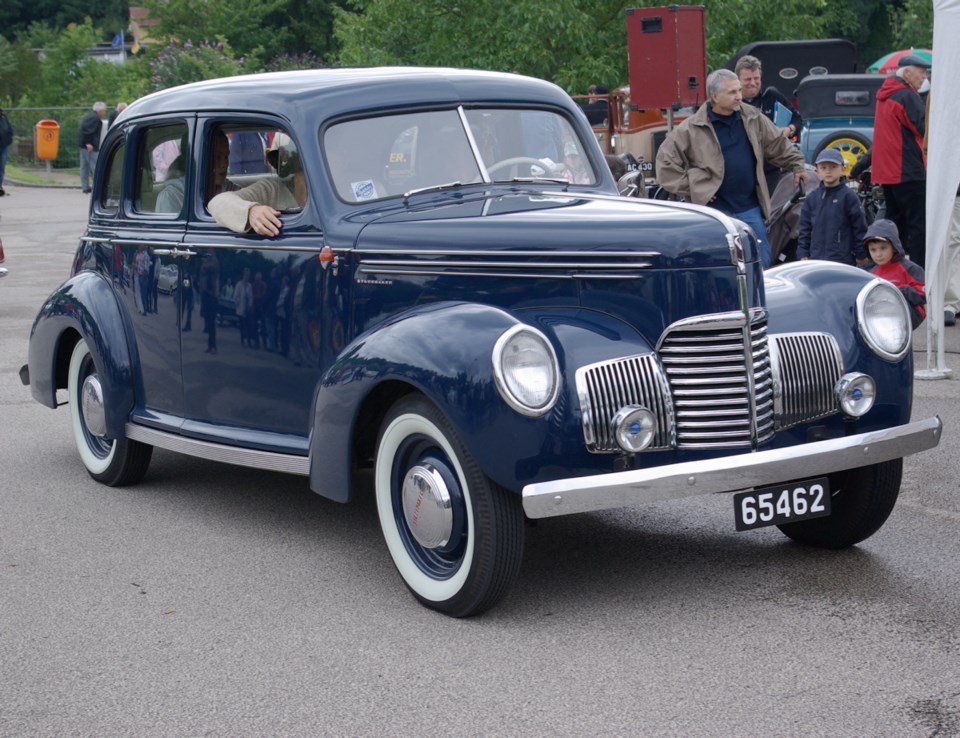Studebaker began building and selling cars in South Bend, Indiana, in 1902, and by the late 1920s and early ’30s it held virtually every American Automobile Association stock car speed and endurance record, including 25,000 miles in less than 25,000 minutes.
Studebakers ran well in the Indianapolis 500 for several years in the 1930s when modified stock cars were allowed to enter. It finished as high as third in 1932.
But in spite of its many accomplishments, Studebaker met its match in the 1930s Depression. Bad economic times, some poor management decisions (including acquiring Pierce-Arrow in 1928 and continuing to pay dividends right into the Depression), put Studebaker in receivership by 1933.
Following the suicide of president Albert Erskine in 1933, vice-president of engineering and production Harold Vance and vice-president of sales Paul Hoffman took over running the company. With model retrenchment and prudent management, chairman Vance and president Hoffman were able to put Studebaker back on its feet by 1935.
While Studebaker continued offering medium- and higher-priced cars, in 1935 it decided to broaden its offerings by entering the popular-priced (under $700) field. This wasn’t its first foray into light cars. It had been less than successful with previous attempts, the Flanders (1909-12), Erskine (1926-30) and Rockne (1932-33), named after Kenneth (Knute) Rockne, famous, popular and then recently deceased football coach at South Bend’s Notre Dame University.
In returning to the light car field, Studebaker vowed to do it right this time. They conducted surveys on what average consumers could afford and what they valued in a car, and used this information as a guide in designing a new model to be called the Champion.
The Champion was a “clean-sheet” project, meaning that engineers were not required to compromise by designing around existing components. They could produce an all-new car tailored specifically to the needs and pocketbooks of their target market.
Because the components would not be used in larger cars, everything could be kept at optimum lightness. The engine, for example, was a side-valve 78-horsepower inline six with bore and stroke of 76.2 x 98.4 mm giving a displacement of 2.7 litres (164.3 cu in.). It had generous bearings, full-pressure lubrication and weighed 68 kilograms less than comparable Chevrolet or Plymouth sixes.
But weight-saving did not produce a weak engine. John Bond, a former Studebaker engineer who went on to become owner/publisher of Road & Track magazine, wrote that the engine would withstand 4,500 rpm on the dynamometer for 100 hours.
A lighter engine allowed vehicle components such as suspension, frame and driveline to be lighter. The independent front suspension used Studebaker’s “Planar” transverse multi-leaf springs. Weight was also saved in the body by eliminating running boards. The result of this dieting was a weight under 1,089 kg, some 272 kg lighter than a Chevrolet.
To supervise styling, Studebaker hired Raymond Loewy, who would gain fame after the Second World War for his trend-setting “coming-or-going” 1947 Studebaker. Loewy’s team produced a contemporary but not earth-shaking design that by eliminating external hinges and the running boards gave the Champion a clean, pleasant appearance.
The Champion arrived in the showrooms with such options as a “Hill Holder” which applied the brakes when the clutch was depressed to prevent roll-back on hills. Overdrive reduced highway engine speed, which contributed significantly to the Champion’s good gasoline mileage. Studebaker exploited this with such demonstrations as an AAA supervised cross-country run of 9,890 km 27.26 mpg.
Studebaker also staged several speed and endurance feats, which included taking those two cross-country economy-run Champions to the Indianapolis Speedway track, where they were driven 24 hours a day for 15,000 miles at a 100 km/h average, including stops.
The Champion proved to be a champion in the showroom, too. In spite of being a half model year, 33,905 1939s were sold. The little-changed 1940 models reached more than 66,000 sales. The Champion had saved Studebaker, and with a Loewy restyling for 1941, it continued to do well until the auto industry shut down for the Second World War in February 1942.
Following the war, the lightly revised 1942 Champion became the 1946 Skyway Champion, the only 1946 model Studebaker offered. After a few months, it was replaced by Loewy’s dramatic new 1947 “three box” design. The Champion name continued until the Lark arrived in 1958.
The Champion’s engine received an overhead-valve conversion in 1961 and stayed in service until 1964. Studebaker stopped building cars in South Bend in 1964 and moved production to Hamilton, Ont. It switched to General Motors engines until production stopped for good in 1966.



